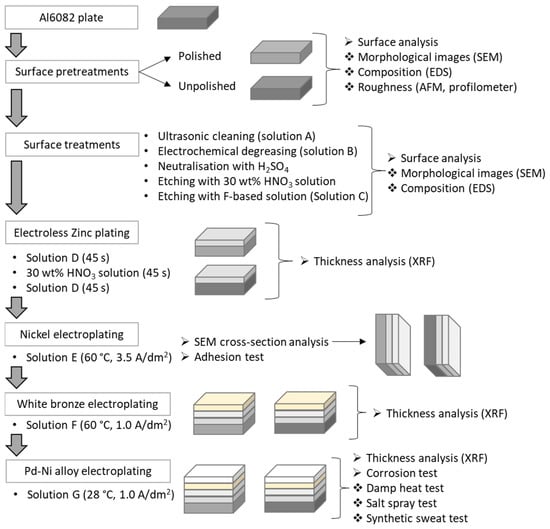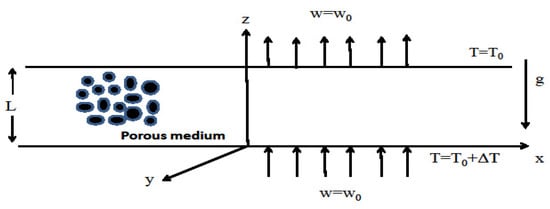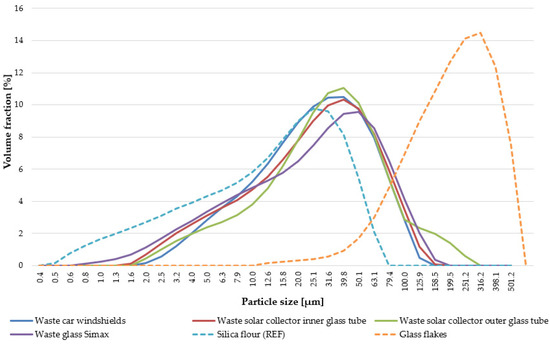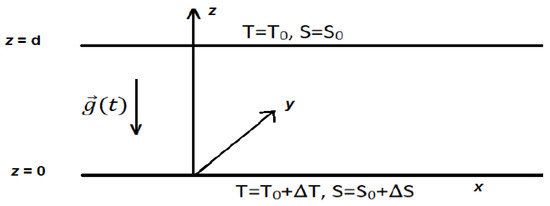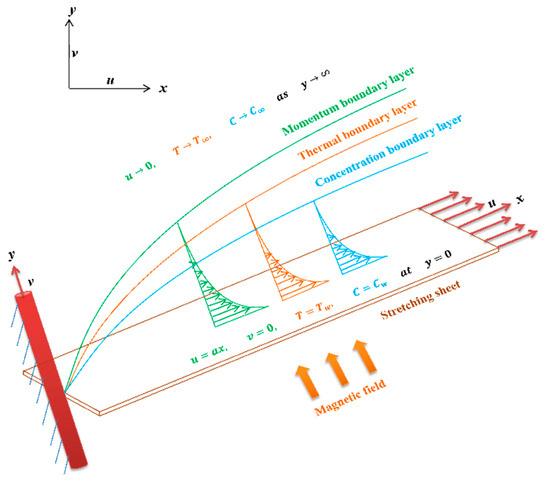Feature Paper Collection for Topic Editors and Invited Scholars in Coatings
Share This Topical Collection
Editor
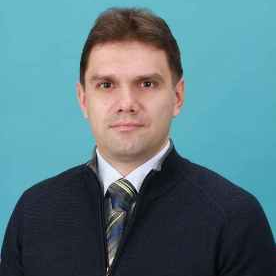 Prof. Dr. Mikhail Sheremet
Prof. Dr. Mikhail Sheremet
 Prof. Dr. Mikhail Sheremet
Prof. Dr. Mikhail Sheremet
E-Mail
Website
Collection Editor
Laboratory on Convective Heat and Mass Transfer, Tomsk State University, Lenin Ave, 36, 634050 Tomsk, Russia
Interests: heat and mass transfer; fluid mechanics; modeling and simulation; convection; nanofluids; porous media; thermal radiation; electronics cooling
Special Issues, Collections and Topics in MDPI journals
Topical Collection Information
Dear Colleagues,
This Feature Paper Collection for Topic Editors and Invited Scholars in Coatings for Topic Editors from the Coatings journal (ISSN 2079-6412) is dedicated to the publication and discussion of research articles, letters, reviews, and communications on all aspects of science and engineering of coatings, thin and thick films, surfaces, and interfaces.
We welcome the submission of reviews and outstanding articles to this Feature Paper Collection to improve current knowledge of coatings, thin and thick films, surfaces, and interfaces. Manuscripts for this important Feature Paper Collection of Coatings will be accepted by the editorial office, the Topic Editor, and Editorial Board Members by invitation only.
- Thin and thick films;
- Processes for coating deposition and modification;
- Characterization techniques;
- Functional, protective, and decorative coatings;
- Dyes, pigments, and their intermediates;
- Wear, corrosion, erosion;
- Coatings for high temperature;
- Film materials for packaging;
- Applied surface science;
- Adsorption, adhesion, functionalization;
- Fundamental and functional properties of surface and interfaces;
- Theoretical and computational modeling of surfaces and interfaces;
- High surface area systems: colloids, nanoparticles, large interfaces.
Prof. Dr. Mikhail Sheremet
Collection Editor
Manuscript Submission Information
Manuscripts should be submitted online at www.mdpi.com by registering and logging in to this website. Once you are registered, click here to go to the submission form. Manuscripts can be submitted until the deadline. All submissions that pass pre-check are peer-reviewed. Accepted papers will be published continuously in the journal (as soon as accepted) and will be listed together on the collection website. Research articles, review articles as well as short communications are invited. For planned papers, a title and short abstract (about 100 words) can be sent to the Editorial Office for announcement on this website.
Submitted manuscripts should not have been published previously, nor be under consideration for publication elsewhere (except conference proceedings papers). All manuscripts are thoroughly refereed through a single-blind peer-review process. A guide for authors and other relevant information for submission of manuscripts is available on the Instructions for Authors page. Coatings is an international peer-reviewed open access monthly journal published by MDPI.
Please visit the Instructions for Authors page before submitting a manuscript.
The Article Processing Charge (APC) for publication in this open access journal is 2600 CHF (Swiss Francs).
Submitted papers should be well formatted and use good English. Authors may use MDPI's
English editing service prior to publication or during author revisions.
Published Papers (6 papers)
Open AccessArticle
Electroplating on Al6082 Aluminium: A New Green and Sustainable Approach
by
Andrea Comparini, Ivan Del Pace, Walter Giurlani, Roberta Emanuele, Margherita Verrucchi, Marco Bonechi and Massimo Innocenti
Cited by 5 | Viewed by 3218
Abstract
Aluminium and its alloys are interesting for many applications because they are very light, cheap, and unlimitedly recyclable. Despite being a promising base material for the fashion-jewellery sector, their tendency to form a passivating film makes them difficult to be galvanized, even more
[...] Read more.
Aluminium and its alloys are interesting for many applications because they are very light, cheap, and unlimitedly recyclable. Despite being a promising base material for the fashion-jewellery sector, their tendency to form a passivating film makes them difficult to be galvanized, even more when recycled aluminium contains impurities of refractory elements. Indeed, the most common processes for galvanising aluminium are often expensive and not environmentally sustainable because they involve the use of cyanides. In this work we focussed on the pre-treatments and electroplating on Al6082 aluminium which is largely used for fashion-jewellery applications. The objective of the present study was to assess whether Al6082 series aluminium is suitable a as base material for the fashion market; therefore, we investigated the effectiveness of plating pre-treatments and the success of electroless zinc deposition using an innovative alkaline cyanide-free zincate solution. After the electroplating, adhesion between the deposited layers was evaluated both with cross-sectional scanning electron microscope (SEM) analysis as well as with an adhesion evaluation test (ISO2819:2018): no detachments confirmed the positive test outcomes and thereby highlighted that Al6082 can be exploited as base material in the fashion-jewellery market.
Full article
►▼
Show Figures
Open AccessArticle
Impact of Throughflow and Coriolis Force on the Onset of Double-Diffusive Convection with Internal Heat Source
by
Kallu Vetty Muhammed Rafeek, Gudala Janardhana Reddy, Ravi Ragoju, Gundlapally Shiva Kumar Reddy and Mikhail A. Sheremet
Cited by 4 | Viewed by 1210
Abstract
The present research examines the joint influence of throughflow and Coriolis force on the onset of double-diffusive convection with an internal heat source modelled by Darcy’s law. The BVP4C routine in MATLAB R2020a is used to solve the eigenvalue problem numerically. Critical Rayleigh
[...] Read more.
The present research examines the joint influence of throughflow and Coriolis force on the onset of double-diffusive convection with an internal heat source modelled by Darcy’s law. The BVP4C routine in MATLAB R2020a is used to solve the eigenvalue problem numerically. Critical Rayleigh numbers are obtained for designated values of governing parameters. The effect of the internal heat source parameter, Taylor number, Darcy number, and Peclet number on the system’s stability is investigated. The internal heat source parameter has a destabilizing influence on the system, according to our findings. The reason behind this observation is that the presence of an internal heat source in the porous medium may cause more molecular diffusion inside the medium. The Taylor number, on the other hand, stabilizes the system for both upward and downward throughflow because rotation introduces vorticity into the fluid. Thus, the fluid moves with higher velocity in horizontal planes. The velocity of the fluid perpendicular to the planes reduces as a result of this motion. Thus, the onset of convection is delayed.
Full article
►▼
Show Figures
Open AccessFeature PaperArticle
Optimisation of Thiourea Concentration in a Decorative Copper Plating Acid Bath Based on Methanesulfonic Electrolyte
by
Lorenzo Fabbri, Walter Giurlani, Giulia Mencherini, Antonio De Luca, Maurizio Passaponti, Emanuele Piciollo, Claudio Fontanesi, Andrea Caneschi and Massimo Innocenti
Cited by 10 | Viewed by 4004
Abstract
The role of thiourea as an organic additive in the nucleation and growth mechanism was studied for copper deposition and its application in the decorative electroplating and fashion accessory industries. The bath was designed to reduce the environmental and ecological impacts using methanesulfonic
[...] Read more.
The role of thiourea as an organic additive in the nucleation and growth mechanism was studied for copper deposition and its application in the decorative electroplating and fashion accessory industries. The bath was designed to reduce the environmental and ecological impacts using methanesulfonic acid as electrolyte as an alternative to alkaline cyanide baths. We evaluated the nucleation and growth mechanism of copper exploiting voltametric and chronoamperometric measurements with a brightener concentration ranging from 0 to 90 ppm. We used the Scharifker–Hills model to estimate the type of nucleation mechanism after progressive addition of thiourea. Scanning electron microscope was employed for surface analysis and morphological characterisation of the nuclei. We verified that progressive nucleation is a key step in the obtainment of a shiny and homogeneous copper film, but an excess of thiourea could cause parasitic adsorption reactions on the surface of the substrate. X-ray fluorescence spectroscopy was used for the thickness determination of the copper deposits and the electrodeposition efficiency correlated to thiourea concentration. Finally, the optimal concentration of thiourea was assessed to be 60 ppm for the used formulation of copper plating.
Full article
►▼
Show Figures
Open AccessEditor’s ChoiceArticle
Verification of the Influence of Particle Shape on the Chemical Resistance of Epoxy Coating and Use of Waste Glass as the Filler
by
Jana Hodná, Jakub Hodul, Rostislav Drochytka and Michaela Seidlová
Cited by 5 | Viewed by 2418
Abstract
The use of suitable secondary raw materials as fillers in progressive, protective agents primarily intended for horizontal concrete construction is very effective not only from the ecological but also from the economic point of view. The impact of using various types of waste
[...] Read more.
The use of suitable secondary raw materials as fillers in progressive, protective agents primarily intended for horizontal concrete construction is very effective not only from the ecological but also from the economic point of view. The impact of using various types of waste glass as fillers on the mechanical parameters of epoxy coatings was experimentally verified. Assessing the dependency of the coating’s chemical resistance on the shape of the used filler’s particles was the main aim of the performed research. A solvent-free epoxy suitable for a chemically aggressive environment was selected for the experiment. These were epoxy coatings filled with a micro filler based on raw materials such as glass flakes and silica flour. Three tested formulations containing fillers with different particle shapes and characteristics were exposed to H
2SO
4, HCl, CH
2O
2 and NaOH at concentrations of 5% and 30% and evaluated after 60, 90 and 120 days. The chemical resistance assessment was carried out not only visually but also using a scanning electron microscope (SEM). Thanks to the use of the waste glass as a coating filler, tensile properties and hardness improved, and its use did not negatively affect the chemical resistance and adhesion of the epoxy coatings. It was found that the shape of the filler particles influences the resistance of the coating against a chemically aggressive environment. The epoxy coating containing pre-treated waste windshield glass (shards) showed even better properties than the reference coating.
Full article
►▼
Show Figures
Open AccessArticle
The Coriolis Effect on Thermal Convection in a Rotating Sparsely Packed Porous Layer in Presence of Cross-Diffusion
by
Suman Shekhar, Ravi Ragoju, Gudala Janardhana Reddy and Mikhail A. Sheremet
Cited by 6 | Viewed by 2145
Abstract
The effect of rotation and cross-diffusion on convection in a horizontal sparsely packed porous layer in a thermally conducting fluid is studied using linear stability theory. The normal mode method is employed to formulate the eigenvalue problem for the given model. One-term Galerkin
[...] Read more.
The effect of rotation and cross-diffusion on convection in a horizontal sparsely packed porous layer in a thermally conducting fluid is studied using linear stability theory. The normal mode method is employed to formulate the eigenvalue problem for the given model. One-term Galerkin weighted residual method solves the eigenvalue problem for free-free boundaries. The eigenvalue problem is solved for rigid-free and rigid-rigid boundaries using the BVP4c routine in MATLAB R2020b. The critical values of the Rayleigh number and corresponding wave number for different prescribed values of other physical parameters are analyzed. It is observed that the Taylor number and Solutal Rayleigh number significantly influence the stability characteristics of the system. In contrast, the Soret parameter, Darcy number, Dufour parameter, and Lewis number destabilize the system. The critical values of wave number for different prescribed values of other physical parameters are also analyzed. It is found that critical wave number does not depend on the Soret parameter, Lewis number, Dufour parameter, and solutal Rayleigh number; hence critical wave number has no impact on the size of convection cells. Further critical wave number acts as an increasing function of Taylor number, so the size of convection cells decreases, and the size of convection cells increases because of Darcy number.
Full article
►▼
Show Figures
Open AccessArticle
Magnetized Dissipative Soret Effect on Chemically Reactive Maxwell Fluid over a Stretching Sheet with Joule Heating
by
Suresha Suraiah Palaiah, Hussain Basha, Gudala Janardhana Reddy and Mikhail A. Sheremet
Cited by 6 | Viewed by 1776
Abstract
The present research paper deals with the study of heat and mass transfer characteristics of steady viscous incompressible two-dimensional Maxwell fluid flow past a stretching sheet under the influence of magnetic field and the Soret effect. A well-known non-Newtonian Maxwell fluid flow model
[...] Read more.
The present research paper deals with the study of heat and mass transfer characteristics of steady viscous incompressible two-dimensional Maxwell fluid flow past a stretching sheet under the influence of magnetic field and the Soret effect. A well-known non-Newtonian Maxwell fluid flow model is used to differentiate it from the Newtonian fluids. The present physical problem gives the set of highly nonlinear-coupled partial differential equations that are not amenable to any of the direct techniques. The resultant nonlinear system of partial differential equations is reduced to a set of nonlinear ordinary differential equations by using suitable similarity transformations. Due to the inadequacy of analytical techniques, a bvp4c MATLAB function is used to solve the developed nonlinear system of equations. The simulated results are shown for various values of physical parameters in the flow regime. Additionally, the numerical values of skin-friction coefficient, heat, and mass transfer rates are calculated and tabularized. From the present investigation, it is observed that the normal and axial velocity profiles decreased for the enhancing values of the magnetic parameter. Increasing the Prandtl and Schmidt numbers reduces the temperature and concentration profiles in the flow region, respectively. Increasing the Maxwell fluid parameter decreases the velocity profile and magnifies the temperature field. Additionally, increasing the Soret number increases the concentration profile in the flow regime. Comparison of current similarity solutions with available results indicates the accuracy and guarantee of the present numerical results and the used method.
Full article
►▼
Show Figures





